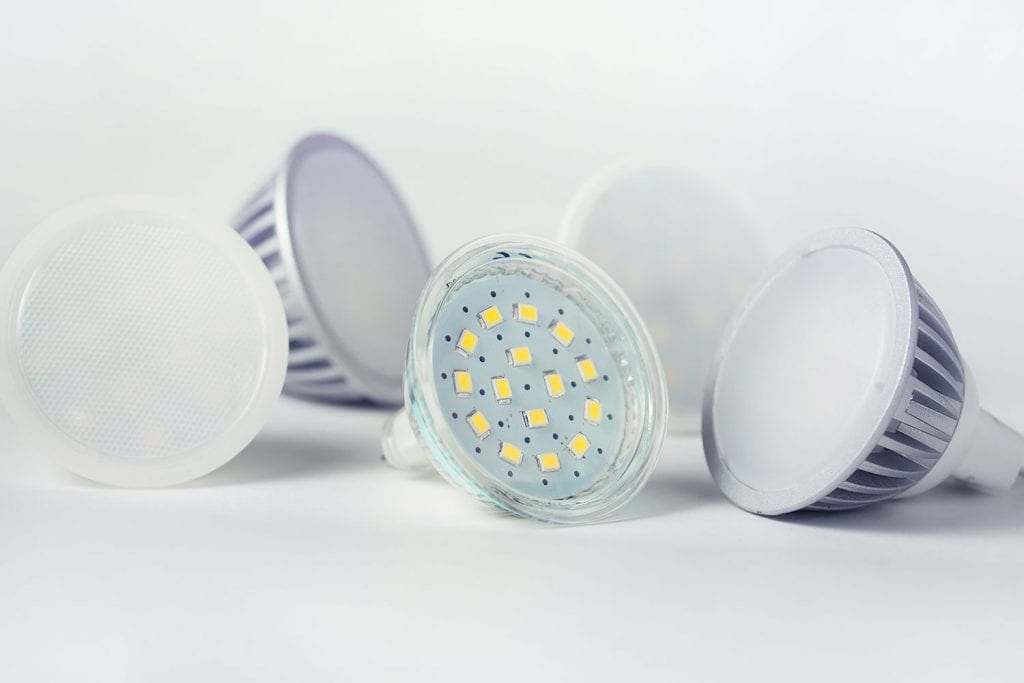The Raw Numbers: How LED Lighting Reduces Maintenance Costs
“Oh, awesome! Another light has burned out! As if my utility bills aren’t already through the roof as it is, now I have to place a call to maintenance and get this fixed!”
Ooof. We’ve been there. We get it. We know that lighting is a fundamental component of your institution, whether it be a school, a library, a university, a hospital, or any other municipal building. It can create the right mood for a classroom, eliminate shadows and hazards in the service departments, extinguish dangers in the parking lot, stairwells, and hallways, and guide office workers throughout their days. So, when a light goes out, someone must address the issue, which will cost your institution (and the taxpayers by extension) money. And if you aren’t using LED lighting, maintaining other light sources (like fluorescents and HIDs) is actually costing you more than you realize. Let’s see why and how LED lighting reduces maintenance costs.
LED Lighting vs. Fluorescent Lighting: It’s All About the Lifespan
Most municipal buildings haven’t converted to smarter IoT-based LED systems with networked controls. That means that the buildings employ either fluorescent or high-intensity discharge (HID) lighting technology (or, potentially even incandescent bulbs). Now, generally speaking, the typical LED lasts for a minimum of 50,000 hours, whereas the typical fluorescent only lasts for about 20,0000. This means that in your building, you are replacing fluorescent lighting twice as often as if you were running longer lasting LED lights.
Additionally, you are probably aware that fluorescents require special electrical devices called ballasts in order to function. Every time you replace a fluorescent tube, it’s likely you’ll also need to replace the ballast—which is an additional charge. LEDs do not use ballasts. So, this means you are paying for additional material that you wouldn’t need to with an LED luminaire.
Now, let’s look at the dollars involved. Fluorescent tubes run about $3 and ballasts are somewhere around $30. So, for about 40,000 fluorescent hours, you are paying about $66 per fixture on average.
Guess how much LEDs cost? We’ll be conservative and say about $10. Ten dollars. You could be paying $10 instead of $66. That’s a saving of $56 per light. Now, just imagine that your building has 200 light fixtures that are all running fluorescents. When you do the math, you get a total savings of $11,200 for the 40,000 fluorescent hours. Imagine what you could do with an extra $11k! And this is only a very basic example. Many times, our clients achieve far greater maintenance savings when upgrading to LED lighting.
LED vs. HIDs: The Savings Are Even Greater!
If you’re running HIDs, a conversion to LEDs will generate even more savings when it comes to replacements. Again, generally speaking, HIDs typically last for about 20,000 hours and cost about $15. Like fluorescents, HIDs also require ballasts, which cost about $30. LED replacements for HIDs last for almost 100,000 hours and cost $100—without requiring ballasts, of course. So, this means that for 100,000 hours of light, HID light replacements will cost $225, whereas LEDs will only cost $100. That’s a saving of $125, and, when multiplied by our 200-fixture example, we come up with a savings of $25,000 for those 100,000 hours of light. And remember: this is just savings on lamps! This does not include energy consumption savings, which is even more significant.
LEDs Come with Longer Warranties
Because of their reliable lifespan, LED fixtures also come with longer warranties from their manufacturers. It’s common to see fixtures with warranties of 5+ years, which is something you will almost never see from companies that produce HID or fluorescent fixtures. A better warranty means a better chance of avoiding out-of-pocket replacement costs.
LEDs Also Eliminate Direct Labor Costs
While most organizations can just replace fluorescent and HID bulbs by looking to someone internally, it’s generally not the case when replacing the ballasts. In many instances, these jobs must be completed by licensed electricians…and the labor cost is about $40 per ballast installation, on the very low end of the spectrum. So, keeping with our previous examples, we would need to add $80 in expenses to the fluorescent scenario and the replacement cost then actually becomes $146 for 40,000 hours of light (and $425 for 100,000 hours of HID light). LED replacements don’t require ballast replacements, so the real direct replacement savings for a 200-fixture building ends up being $27,200 in the fluorescent model and $65,000 for the HID replacement for 100,000 hours. Again, these are just examples, as the actual costs will vary from location to location. But in our experience, many of our clients achieve a surprising savings on maintenance-related costs when upgrading to LED lighting and advanced controls.
LED Lighting and Re-Allocation of Resources
That is a lot of money that you can re-allocate into different areas of your institution. If you run a hospital, perhaps you could use those savings to hire an extra secretary to help eliminate patient wait time. Maybe your school could hire on an extra tutor for the year. Maybe your police department could put an extra officer on the payroll. Maybe your city could throw a special picnic for the community. The bottom line is this: As a steward of your community, you have a chance to save money on multiple levels by converting to a smarter, IoT–based LED lighting and control system. This, in turn, will improve your community and the services you offer. And hopefully, you find that opportunity to be nothing less than “illuminating.” (Yes, pun intended.)








Recent Comments